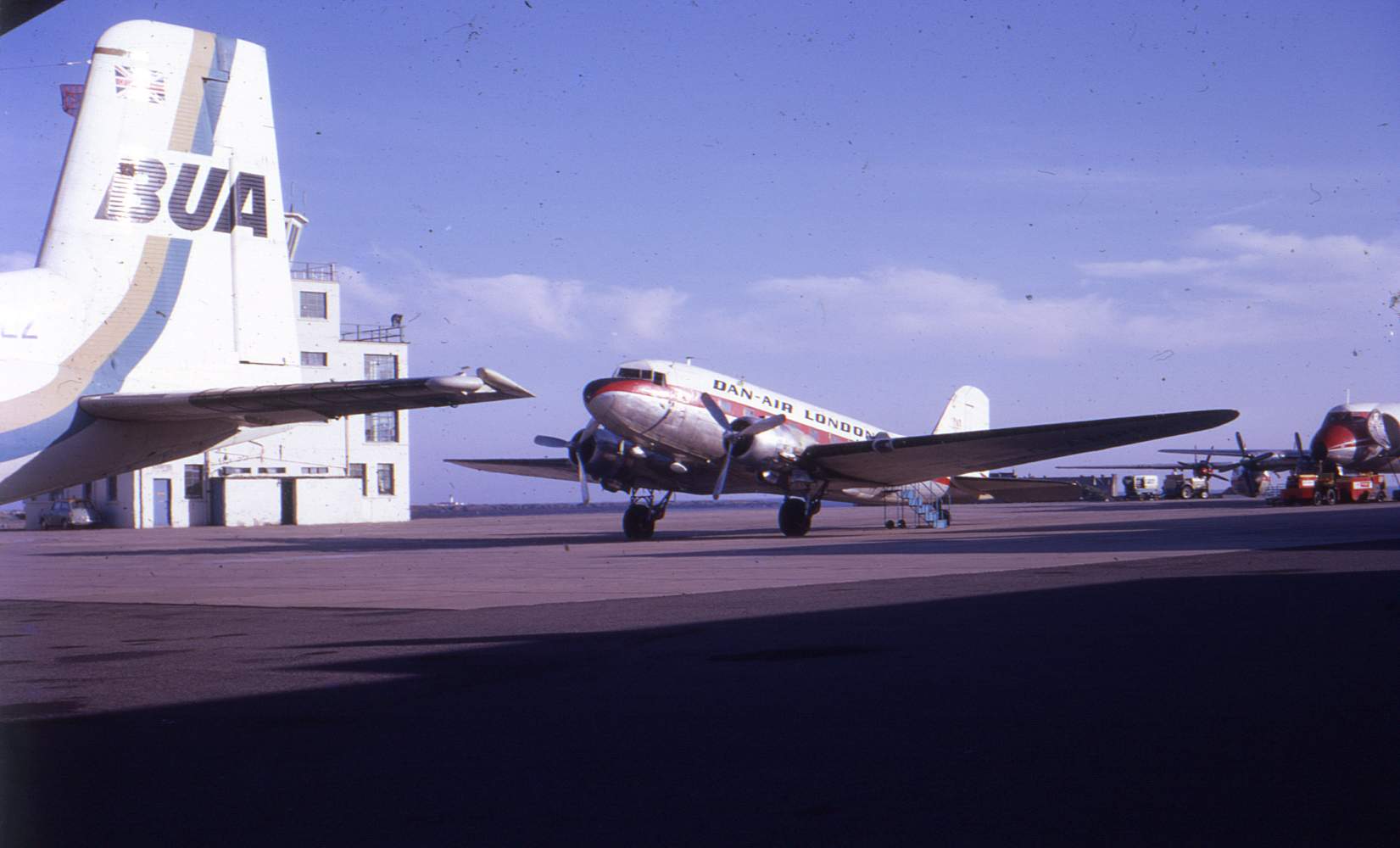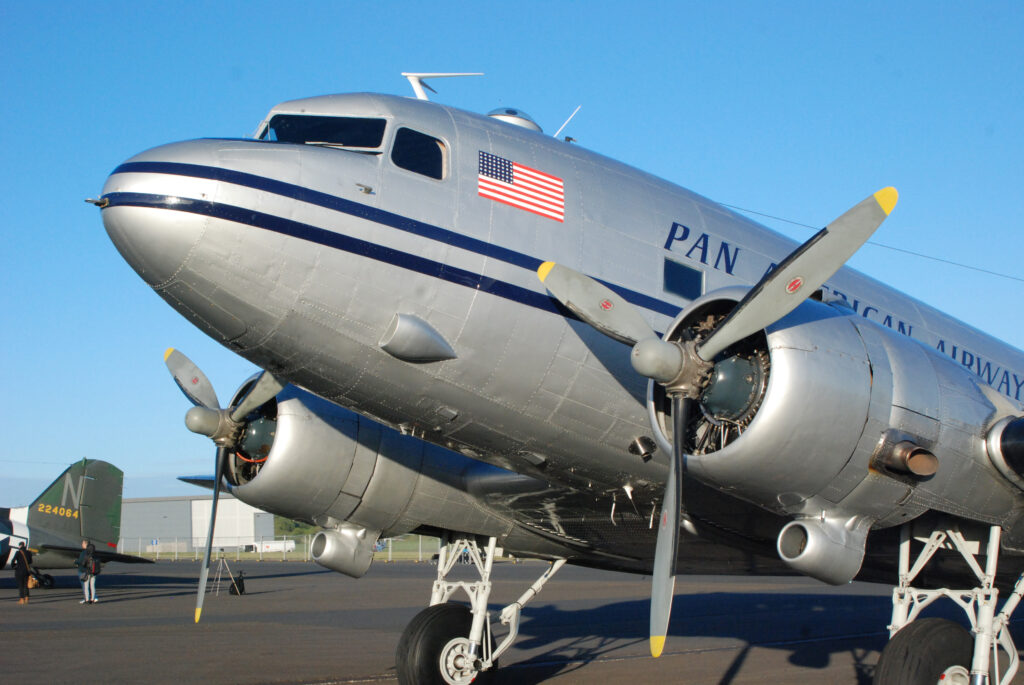
In some ways N877MG is an impostor …. although readily identifiable by her lovely 1940s Pan-American colour scheme, she never actually flew with the airline. However, her history is so interesting that any artistic licence can be forgiven – especially as her early days were with the Pan-Am associate airline, China National Aviation Corporation. Indeed, she is probably the only C-47 to have survived both the hazardous operations over the ‘Hump’ between India and China and the turbulence of post-war China. She is a fascinating craft in so many ways, not the least being the retention of the 1950s corporate interior which had been installed for Johnson & Johnson. N877MG had benefited from many upgrades and modifications over the years but she has now been restored to something closer to her wartime configuration….excepting that luxury interior!
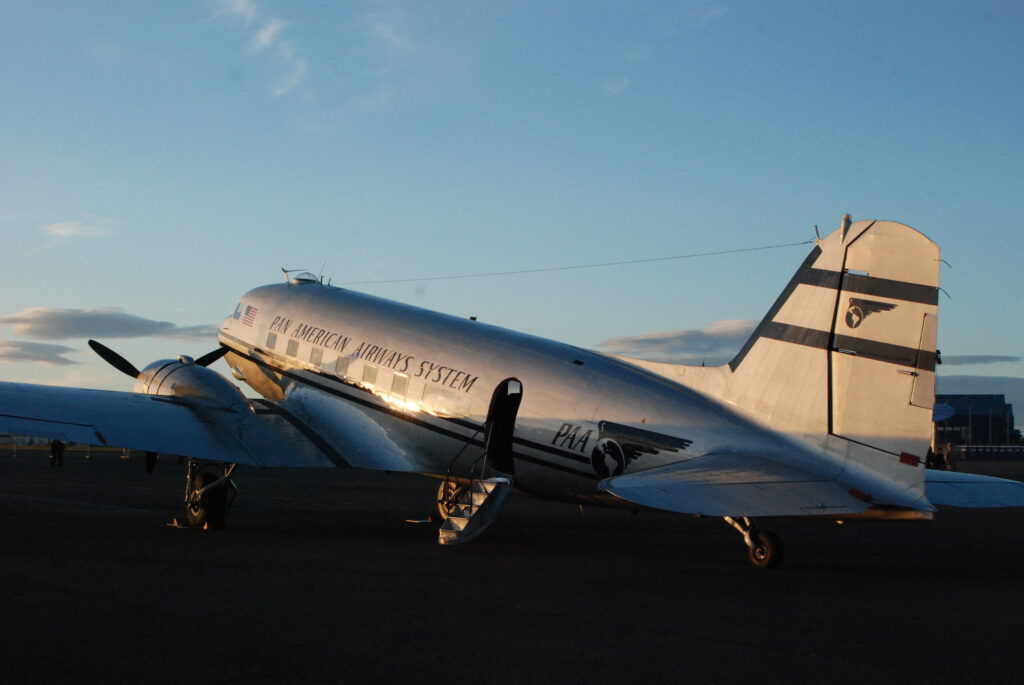
Built as a C-47B-1-DL at Long Beach, California, with construction number 20806, this aircraft was part of a batch of 300 ordered specifically for the Far Eastern operations of CNAC/ Pan American. With a date of manufacture of 29th July 1944, she was allocated the USAAF serial number 43-16340 and delivered on 16th August by the 6th ferrying Group of Central Air Command (1). The celebrated pilot Peter Goutiere had travelled to the USA from India to pick up the aircraft at Miami for the long transit back to CNAC’s base in Calcutta, India (2).
Peter Goutiere was born in India and had attempted to join the USAAC following Pearl Harbor. He was rejected as being too old – ironically, he was still fit enough to visit D-Day Squadron and N877MG at Waterbury in 2019 at the age of 105! However, instead of a military career, he started flying for Pan American’s Pan Africa wing whose mission was initially to deliver P-40 Kittyhawk fighters to North Africa. The P-40s failed to appear and he started looking for other work. He was attracted to Pan American’s far eastern associate, China National Aviation Corporation and, travelling to India, he enrolled with CNAC in April 1943. Their operations were mainly geared to flying the notorious ‘Hump’ route between Calcutta and Myitkyina on the Indian/ Burmese side of the Himalyas and Kunming in China. Bad weather, treacherous terrain and Japanese fighters made this arguably the most dangerous air route in the World. CNAC, as business partners of Pan-Am, had ample experience of flying demanding routes. Their DC-2s and DC-3s, often piloted by Pan American-trained crew like Pete, operated alongside RAF and USAAF C-47s and, later, C-46s. The route to China was christened the ‘aluminum trail’ owing to the scattering of crashed aircraft along the valley floors and mountainsides. By 1944, Peter Goutiere had built up sufficient flying time to earn himself a spell of leave in the USA. Not an organisation to miss an opportunity, CNAC enlisted aircrew returning to the Far East off-leave to deliver new aircraft to the airline’s Calcutta base. Peter Goutiere’s trip to the USA took him four and a half months and, on the return leg, he delivered this very C-47B, 43-16340. The 90 hours of flying was compressed into two weeks of actual travel between Miami and India (2). An extra 75 gallon fuel tank was fitted behind the co-pilot’s seat to give the extra duration required on the longer sectors. Upon arrival in Calcutta (Kolkata today), 43-16340 was allocated the CNAC fleet number ‘100’ and painted with the famous CNAC ‘Chung’ symbol on its starboard wing. Adopted to distinguish CNAC aircraft from enemy Japanese aircraft, the ‘Chung’ represents the ‘centre’ or ‘middle’ (as in Middle Kingdom) and was often accompanied by ‘CNAC’ painted in large letters on the top of the fuselage (3).
(1) The main history timeline is from JMG Gradidge’s book ‘The DC-3 and its Predecessors’, published by Air Britain. The author of this book and fellow Air Britain researchers were instrumental in identifying the correct construction number despite conflicting evidence from fabricated manufacturers plates.
(2) The ‘southern’ Atlantic ferry route ran from Miami to Puerto Rico, Guyana, Belem, Natal, Ascension Island to Accra in Gold Coast/ Ghana. From there, the CNAC aircraft were flown via Maiduguri (NE Nigeria), Khartoum, Aden and Karachi to Calcutta. Pete Goutiere’s departure from the USA started with a low-level ‘buzz’ of the Miami control tower on August 15th 1944. The airline supplied him with a Pan American navigator for the transatlantic leg from Brazil to Accra.
(3) CNAC were also famous for flying a damaged DC-3 as a DC-2 -and-a-half; A DC-2 wing was bolted in place of one of the damaged aircraft’s larger wings and the return journey to the maintenance base made safely. Pete Goutiere didn’t fly the hybrid, but he did see it on the ground.

The war in Asia had less than a year to run by the time 43-16340/ #100 arrived in India, but flying ‘The Hump’ , sometimes twice a day, put a lot of stress on CNAC’s fleet and pilots. Heavy loads and primitive airstrips made for harsh landings and quick turnarounds. During one of these hectic landings, Pilot-in-Command Sam Belieff was unable to halt #100 before she ran off the end of the runway and tipped on her nose in the mud. The ground crew leapt into action and the aircraft was back in service the following day (4). Pete Goutiere, himself, made in the region of 680 trips over the Hump before quitting CNAC in June 1947.
(4) The photo (below) shows #100 with Sam Belieff (1919-1987), the pilot, leaning nonchalantly on the nacelle. His grandson, Eric Ludwig, supplied the photo to the website www.CNAC.org and it also appears in the blog of Greg Couch, author of China Wings.
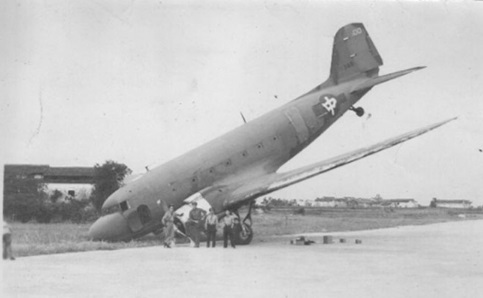
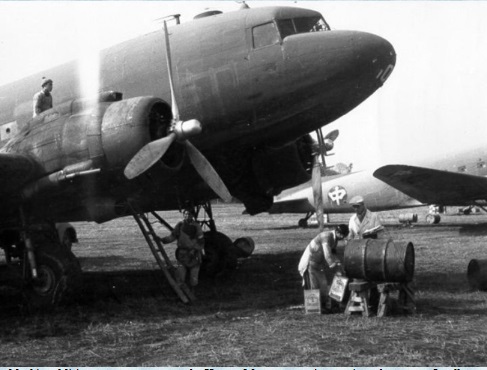
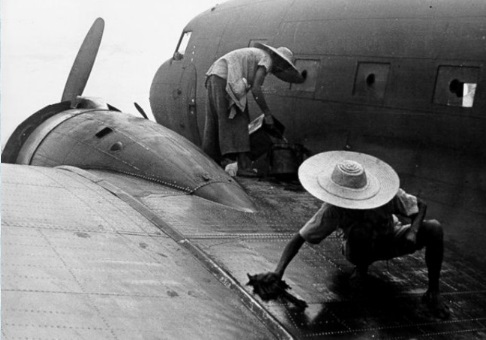
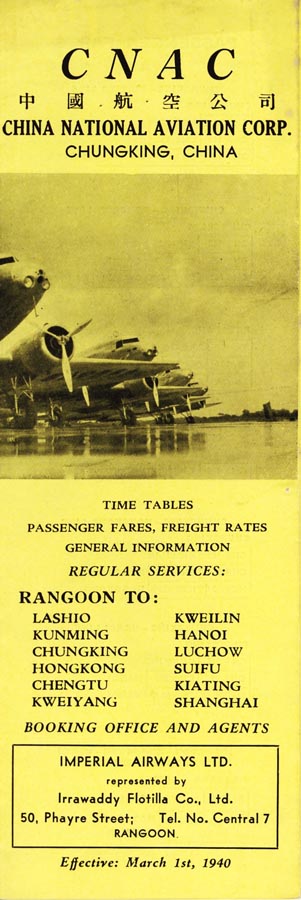
After the war, the political climate in China remained confrontational with the Communists taking the mainland and Chiang Kai-Shek’s Nationalists escaping to Taiwan. DC-3 #100 had been renumbered XT-20 (5) in February 1948 and assigned to the ‘Airbus’ route between Shanghai, Guangzhen and Hong Kong. There were sometimes four or five services per day and the spartan 32-seat interiors of the aircraft would have maximised passenger numbers. However, the civil war in China raised the question of who controlled CNAC and who owned the airline’s assets. While there had been major US-investment in the airline, China considered it to be a national asset and the fleet was grounded at Hong Kong’s Kai Tak airport during protracted legal proceedings. Some aircraft were partially stripped for spares and had wings removed. Others, including ‘Pan-Am’, remained airworthy and some of these were subsequently seized by pro-communist pilots and flown to China. To prevent further instances of this, the Nationalists sent insurgents to sabotage the remaining DC-3s. Seven Dakotas, including ‘Pan-Am’, were damaged during an attack carried-out on April 2nd 1950.
(5) Some sources quote XT-T-20 as her initial post-war serial before she was allocated a fleet number of XT-119.
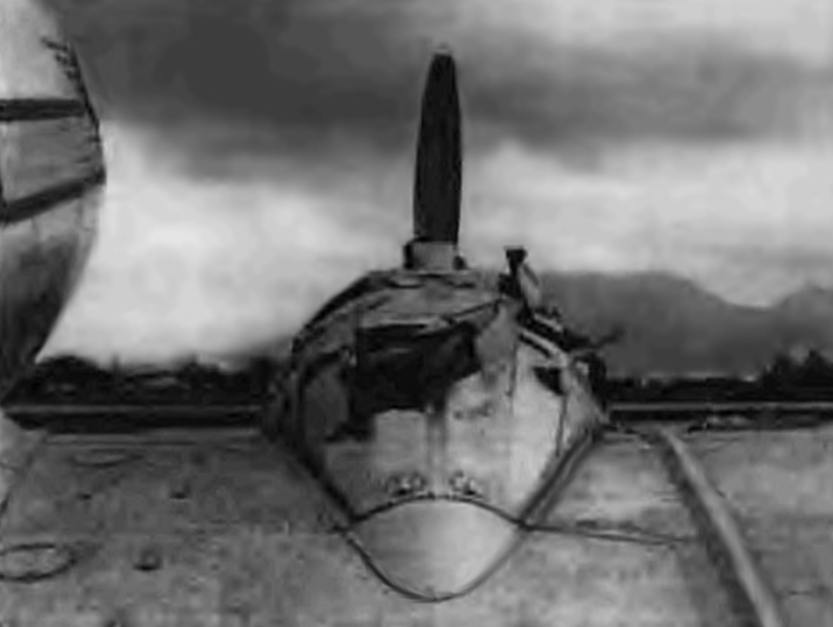
The former leader of the ‘Flying Tigers’ , General Claire Chennault, was keen to take over the aircraft and register them in the USA to his newly-formed Civil Air Transport. XT-20 was scheduled to become N8350C but, with the aircraft now placed under armed guard, there were issues with obtaining the correct construction number, necessary to obtain US-registration. Eventually, it seems Chennault hired one of the communist ground crew to gain entry to the aircraft to copy-down the construction number. However, the undercover visitor found the number ‘4193’ which is most likely to be the Long Beach line number. Over the years, it has often been assumed that the correct number was ‘14193’ as there was no Douglas DC-3 with the c/n 4193. However, this would make the aircraft an Oklahoma-built aircraft and N877MG is a Long Beach-built C-47B (6). While the Hong Kong courts were sympathetic to the communist application to take over the C-47s, the matter was eventually taken to a higher court in London which ruled in favour of the Nationalist government-in-exile. This paved the way for the sale of the aircraft to Chennault and he arranged for the fleet to be transferred back to the USA by sea. XT-20 safely made the trip on a freighter and, today, is believed to be the only CNAC survivor from that period. Many of the others, amazingly enough, were reportedly shipped on a US Navy aircraft carrier and, upon arrival, became involved in a further court case, this time between Chiang Kai Shek’s Nationalists and Chennault. Fortunately, ‘Pan Am’ had arrived earlier and was registered to C.Chennault and W.Willaur before being transferred to the Grand Central Aircraft Company in 1953 for upgrading to VIP specification. Grand Central were based at the airfield of the same name in Glendale and, at the end of WW2, were very active in preparing ex-military aircraft for the civilian market. One of their main interests was in converting A-26 Invaders to corporate aircraft – something that was later continued by Grand Central offshoot On Mark Engineering at Van Nuys. Grand Central took the c/n 4193 as gospel (by now the C-47 had a Douglas plate which supported the spurious number) and added their own identity plate when they completed the upgrade on 27th May 1953. The work carried-out by Grand Central remedied issues which had been summarised in 40 pages of bullet-point problem descriptions (7). It took 6 months to carry-out the work which included: upgraded engines, clam-shell undercarriage doors and a retracting tailwheel, disc brakes, long-range fuel tanks, one piece windshield glass, panoramic windows, airstairs, new galley facilities, upgraded avionics, luxurious seating and upgraded toilets. The port forward crew access door was also removed. Initially registered N387800, she was sold to the medical company Johnson and Johnson on 22nd October 1953 as an executive transport She was subsequently re-registered N800J and painted in J&J’s smart two-tone blue colour scheme. Further upgrade work was later carried-out with a modified DC-4 radome installed to accommodate an advanced colour radar. This gave the C-47 a characteristic, if not particularly lovely, profile for many years.
(6) Details from Air Britain and the ‘Flyinglegends’ web site. See further discussion later in thread.
(7) From the website of current owners www.flyinglegends.com.
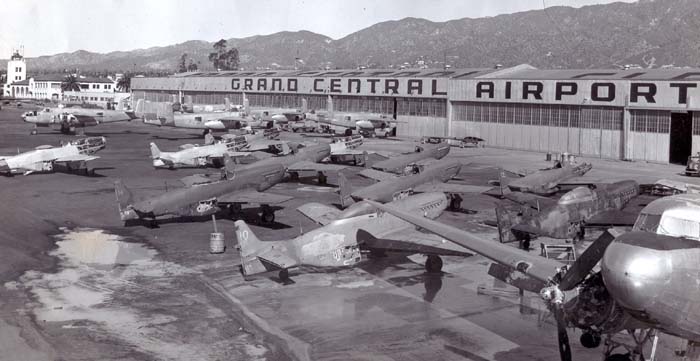
The current interior layout owes much to the aircraft’s six year tenure with Johnson and Johnson. Indeed, there were still J&J First Aid lockers and medical checklists on board for many years. The luxurious seating and the passenger telephones retain a mid 20th century glamour, days before the advent of cell phones and satellite communications.
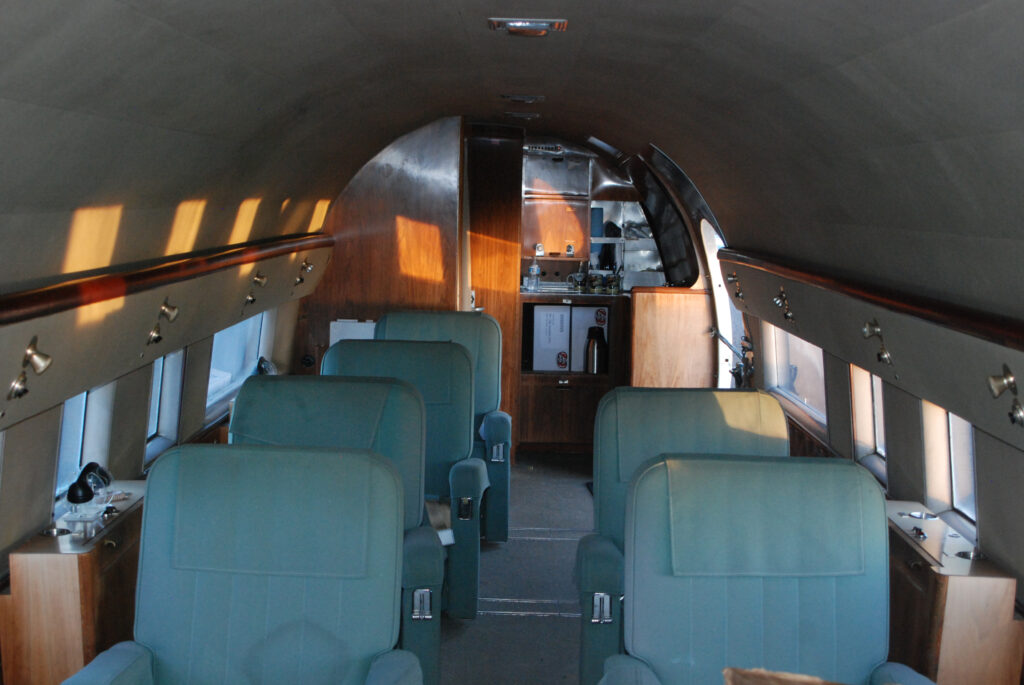
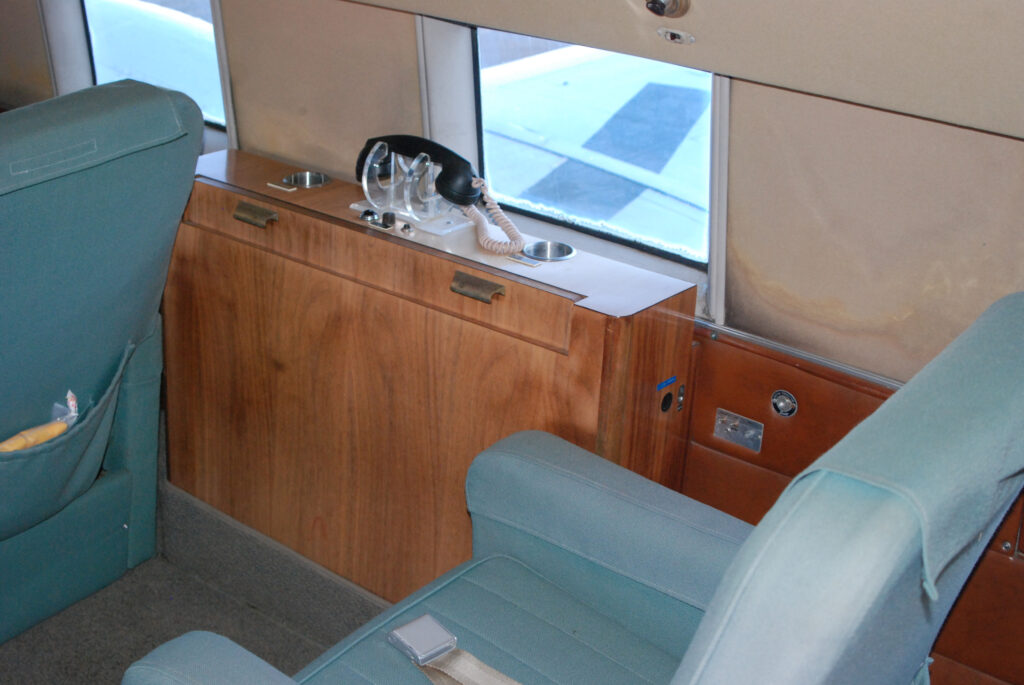
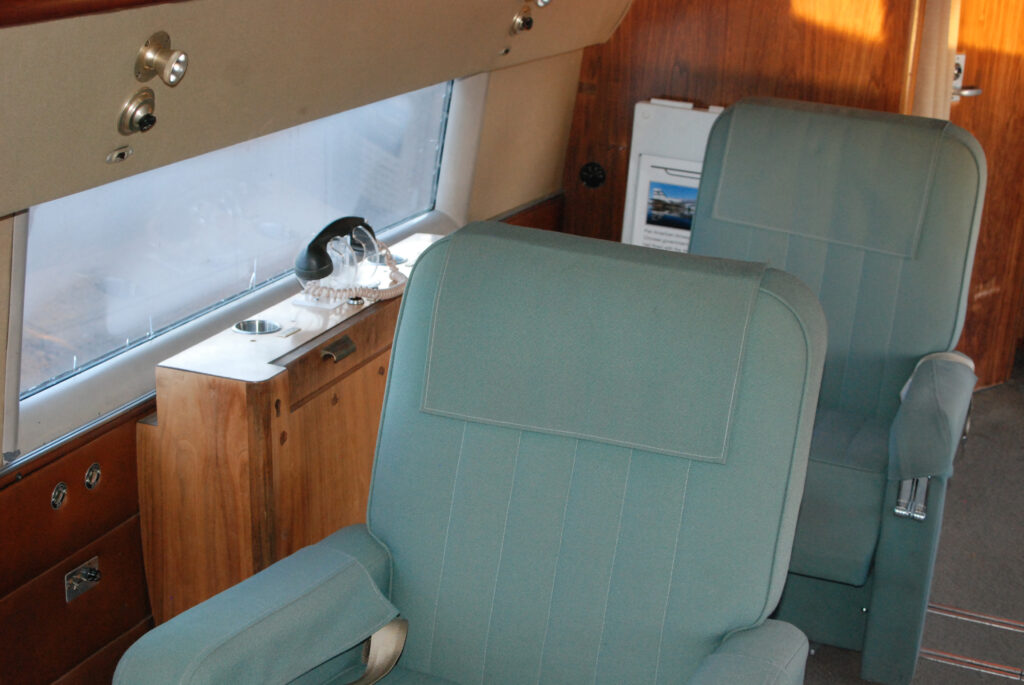
N800J left Johnson’s in June 1959 with her sale to S.A.Tampos and G.Nash. The registration altered very slightly to N8009 and, as it appears that the Viewmaster windows were fitted during this era, it seems likely that she remained as an executive aircraft. After ten years, the ownership was recorded in solely the name of S.A.Tampos of Nashua, New Hampshire, a town which was to play a big part in the aircraft’s future. Subsequent owners (1) were executive/ travel organisations linked to the Tiburzi family in Florida. Tiburzi Tours of Fort Lauderdale are recorded as owners from April 1971 and Club Passport of Pompano Beach, Florida, a month later. In 1975, N8009 moved north again to join Air Nashua Corporation at Nashua. I have little information about this company or what part N8009 played in its operation but the New Hampshire base suggests there may have been links to past or subsequent owners. On 6th July 1978, N8009 was registered to the International Shoe Machine Corporation, also of Nashua, and was to remain with them for close to 18 years. In the late seventies and early eighties, ISMC operated a couple of DC-3s, a T-28 trainer and also a C-118A/ DC-6 on routes all over the World. The Company President was an aviation enthusiast and the Chief Pilot, Foster McEdward, was himself an ex-‘Hump’ pilot having flown the treacherous route for the USAAC between June 1943 and January 1945 and, post war, for CNAC between mid-1946 and 1948. He may well have flown ‘Pan Am’ during those days and certainly recognised her as a fellow Far East veteran as he had a ‘Chung’ symbol painted under the starboard wing. The Company’s DC-6 was outfitted as a flying machinery show room and travelled as far as Australia and New Zealand while N8009 flew to destinations from Alaska to Central America. One memorable mission involved a reprise of her earlier Atlantic crossing: south to Brazil, across to Africa, north to Europe then back home via the northern route. She was noted at Southend Airport in late April 1985 and, by June, was on her way home via Reykjavik. This may well have been the Transatlantic flight where N8009 experienced engine problems while climbing out of the Faeroe Islands, en route to Reykjavik (8). As Liz Matzelle of the Historic Flight Foundation tells the story (7), the starboard engine failed as N8009 climbed through 8000′. Descending to the denser air at 2000′, the fuel load remained too great for a return to Vargar airport so there was little option but to continue to Reykjavik, where a successful landing was made later in the day. A replacement engine was sourced but that also suffered problems during the proving flight and the DC-3 returned to Reykjavik. In the end, it was many weeks before N8009 returned to New Hampshire. N8009 also spent a lot of time at Burlington, Vermont, and was serviced frequently at Middlebury State Airport, close to where Captain McEdward lived most recently. N8009 had flown around 7000 hours when she joined ISMC and just about doubled her flying time during her years with the company.
(8) She also passed through Glasgow in May 1976, probably coming or going to New Hampshire via Reykjavik.
On January 23rd 1996, N8009 was sold to Victoria Forest and Scout LLC of San Fransisco and re-registered N877MG the following day. During 1997, she appears to have worked for San Fransisco’s Fairmont Hotel and been based out of Hayward Air Terminal (9). Retaining the VIP interior, her work most likely continued to be executive transport. The custom nosecone remained and the avionics equipment was upgraded to incorporate Garmin satellite navigation. In October 2005, N877MG was advertised for sale and, on 4th August of the following year, she was bought by Seattle aviation lawyer John T.Sessions who planned to restore her in 1940s Pan American colours as part of his Historic Flight Foundation. She is reported to have received a new CofA on 1st January 2006 (10) and was pictured in the snow at Plattsberg, New York, during winter 2005/06.
(9) Ruud Leeuw’s website www.ruudleeuw.com features good historical information and photos of N877MG.
(10) Sealand Aviation reported in 2010 that a Certificate of Airworthiness had not been issued since 2002, so this may be incorrect.
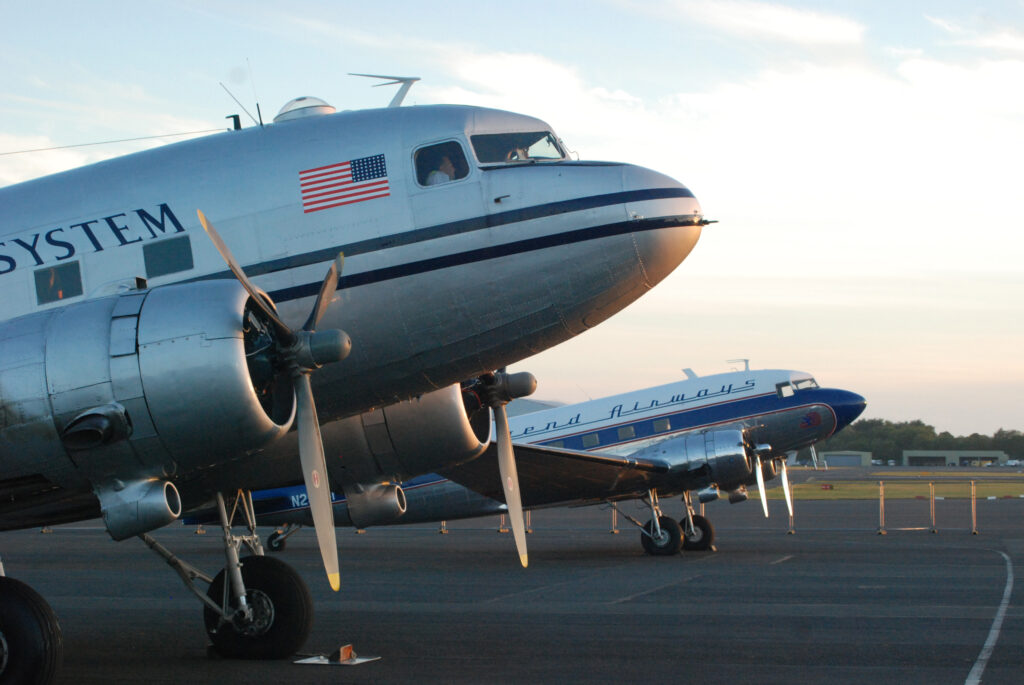
John Sessions, born and raised in Spokane, Washington, had studied Business in Los Angeles and Law at Georgetown University, Washington DC. He had been introduced to flying as a pilot while working for Perkins Coie, a law practice whose Seattle office frequently acted for Boeing. He also maintained real estate interests in North Dakota, Montana and California and frequently flew between business sites. His plan was to establish the Historic Flight Foundation at Paine Field, Everett, Washington, home of the Boeing manufacturing plant.
N877MG remained in New York state and two expert DC-3 pilots were employed for the delivery flight to the west coast. Kent Wien and his father, Merrill Wien, had long experience of the DC-3 via their family airline Wien Alaska, the USA’s second oldest airline. They planned a 5-day transit across the continent from Plattsberg, close to the Canadian border near Montreal, via Chicago, Billings, Montana, to Everett. Kent Wien flew as Captain and posted several clips of the flight on various internet sites (11). After her welcome at Everett, N877MG was flown north to Victoria, British Colombia, where some initial work was commenced. The bespoke radar nosecone and undercarriage doors were removed and preparatory work done for a respray in Pan Am colours for 1949. New engines were installed.
(11) Kent Wien posted details on www.Kentwien.com, now accessed via Facebook/ CockpitChronicles. A clip on www.kzclip.com shows them departing Billings, Montana, with a low pass over the house of a junior aviation enthusiast.
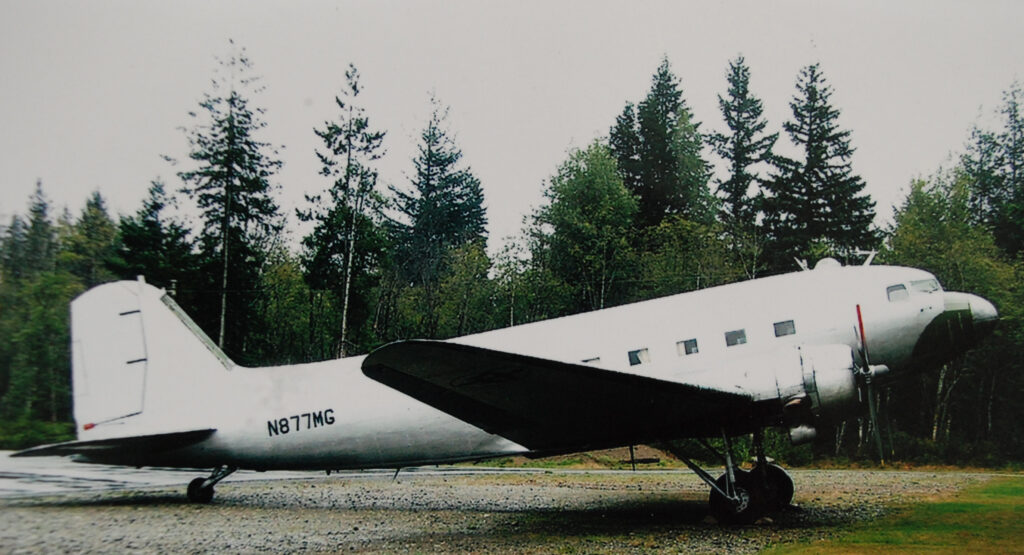
By Spring 2010,it was reported that the restoration had run out of steam and that N877MG was beginning to look neglected. Via a string of recommendations, John Sessions was put in touch with Bill Alder of Sealand Aviation and, on June 30th 2010, N877MG was flown from Victoria to Campbell River, BC.
Sealand reported that she had flown well but was ‘faded’ and needed, what they described as an inspection and the rectification of a few snags. The 14,000 flying hours accumulated upon departure from ISMC fourteen years earlier had increased to 22,000 hours when delivered to Sealand, still a low total time.
During the strip-down work, Bill Alder noted that the aircraft had a bolted empennage at STA 596″ (12) , something which only applied to aircraft built at Long Beach. This confirmed that the Douglas construction plate, which gave Santa Monica as the build site, is not correct. Sealand needed to ensure that they had the correct service manuals and parts for the maintenance work and, therefore, investigated the c/n issue further. They ended-up agreeing with the Air Britain suggestion that N877MG was a C-47B, c/n 20806, built at long Beach and completed on 29/7/1944. As the original delivery had been to CNAC, the upgraded specification was not a consequence of Pan-Am’s modification to ‘Hiper DC-3’ status. This meant that the premise for spraying the aircraft in Pan American colours was probably incorrect. Nonetheless, as the mechanical work progressed apace, it was decided to continue with the Pan-Am respray job. Finally, the aircraft rolled out of the hangar ready for test flying. Although an experienced pilot, John Sessions had little DC-3 airtime so he enrolled the services of DC-3 type-rating instructor Dan Gryder. In November 2012, N877MG, resplendent in her new colours, performed a series of flights from Campbell River, then departed for Paine Field, Everett to start her new life with the Historic Flight Foundation.
Her arrival at Paine Field can be seen on Sealand’s blog: http://www.sealandaviation.com/blog-entry/dc-3-campbell-river-airport
(12) The tail assembly, or empennage, is bolted to Long Beach-built aircraft at station STA 596″, i.e. 596 inches from the longitudinal datum at the nose of the aircraft.
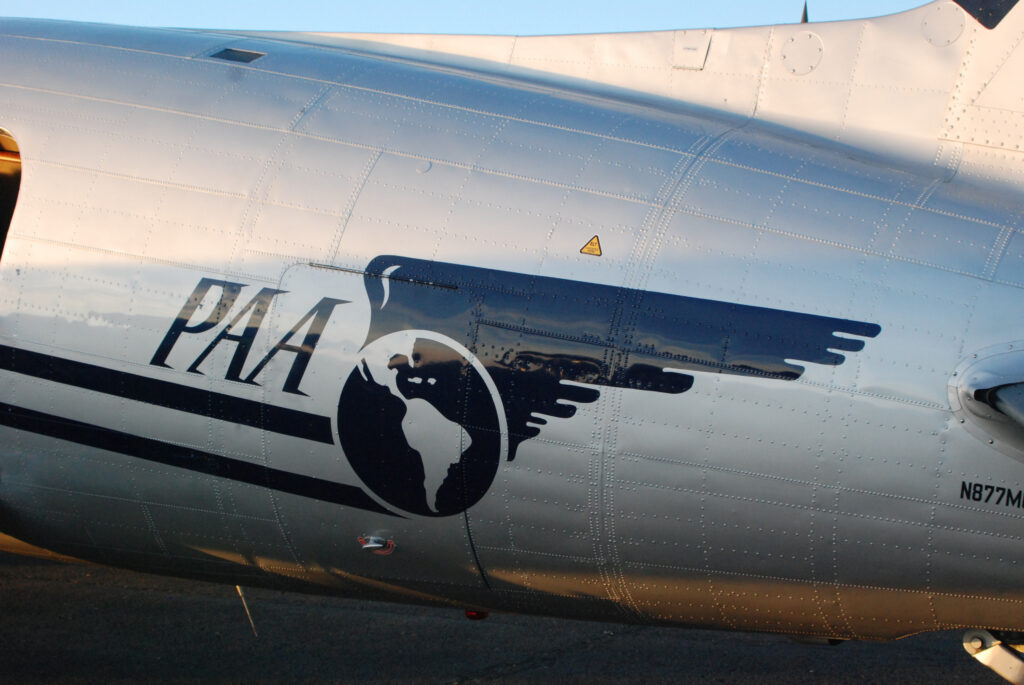
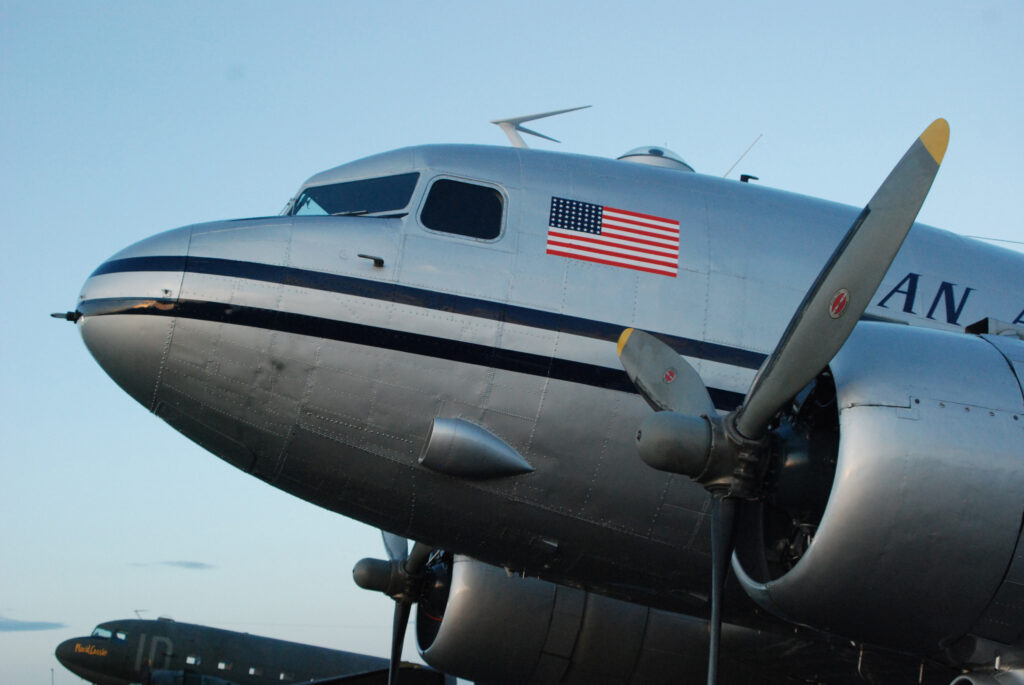
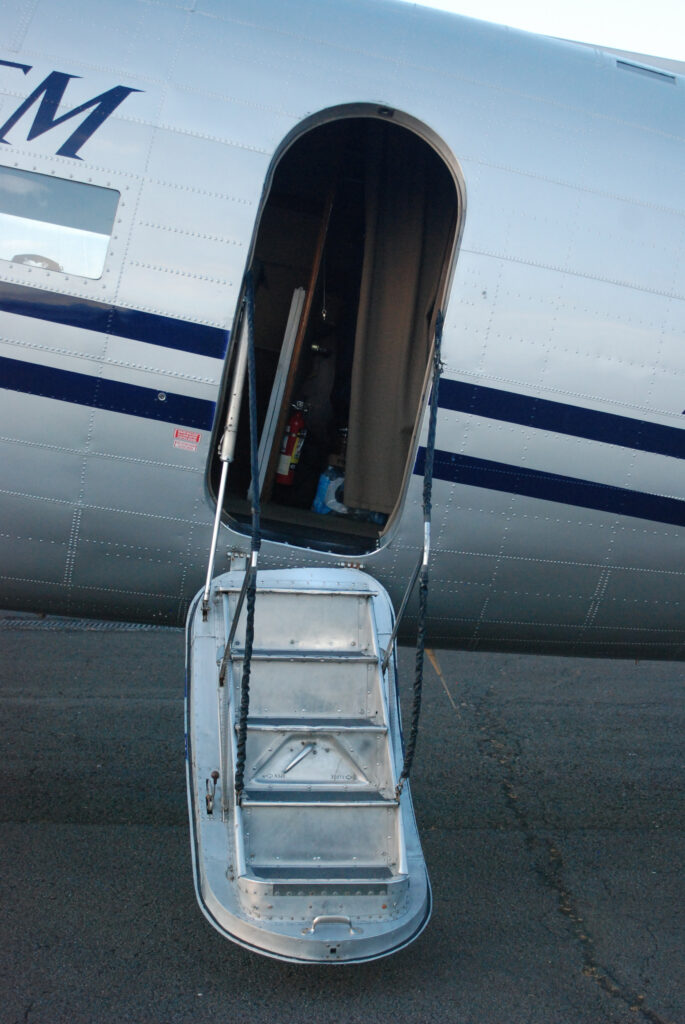
N877MG’s first passenger-carrying flight with HFF was recorded on March 2nd 2013 from the field at Everett and, that summer, she was a guest at the EAA fly-in at Oshkosh. As her distinguished history became apparent, the HFF were also able to contact her former pilot, Pete Goutiere, and, in September 2014, N877MG flew Pete and two of his grandsons from Everett to San Fransisco to attend that year’s CNAC 75th anniversary reunion. The flight, which took almost 5 hours, was one of the longest made since the restoration and involved the C-47 climbing to 13800′ to clear wild fires in California. Pete Goutiere, at the grand age of 99, was able to take the controls of the C-47B again for a brief spell in command.
Since then, N877MG has been a regular visitor to airfields and airshows on the west coast of the USA. It was therefore very exciting when it was announced that ‘Pan Am’ would be part of the D-Day Squadron for the 2019 anniversary.
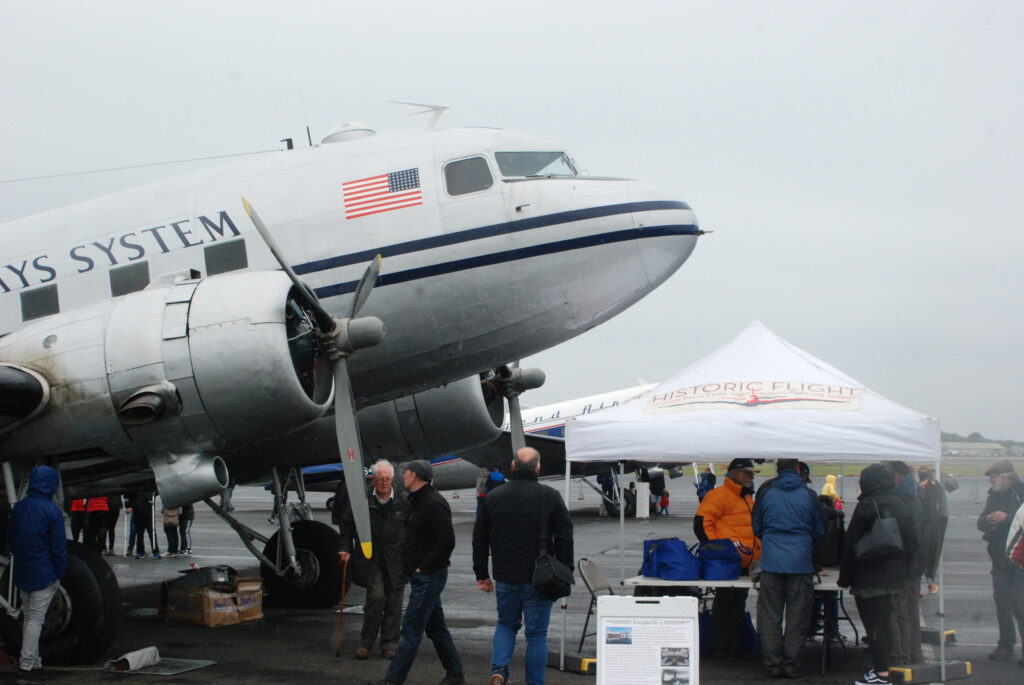
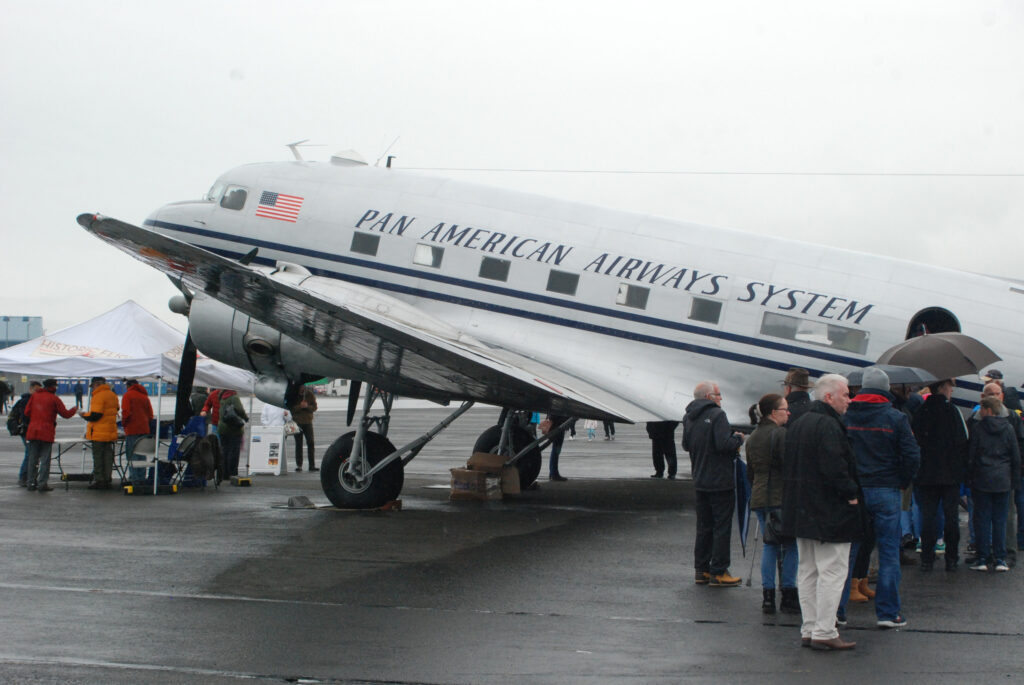

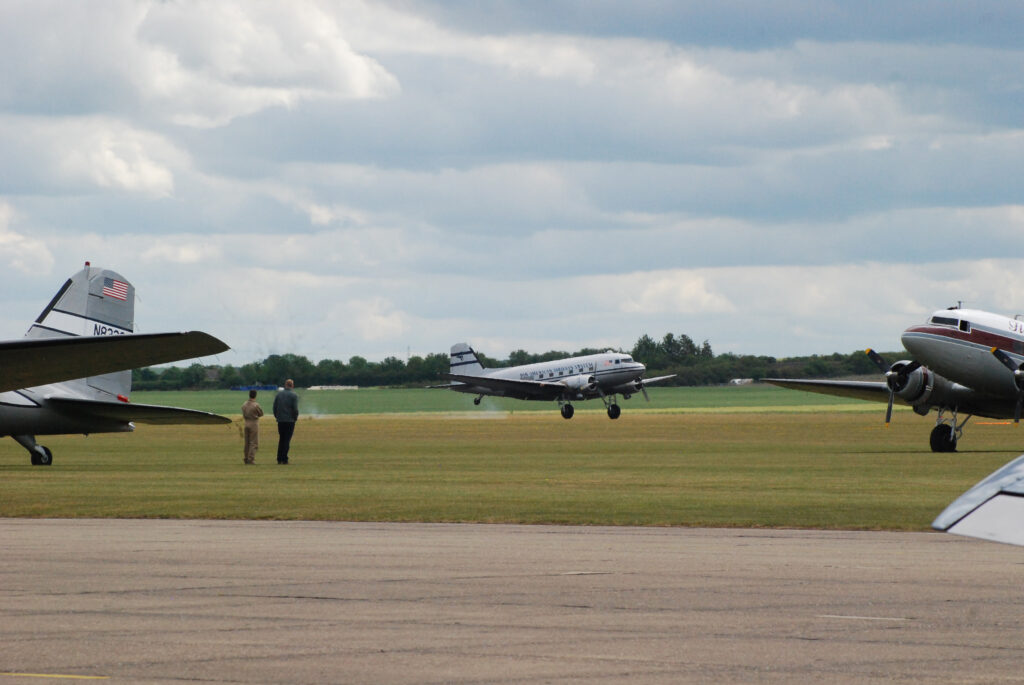
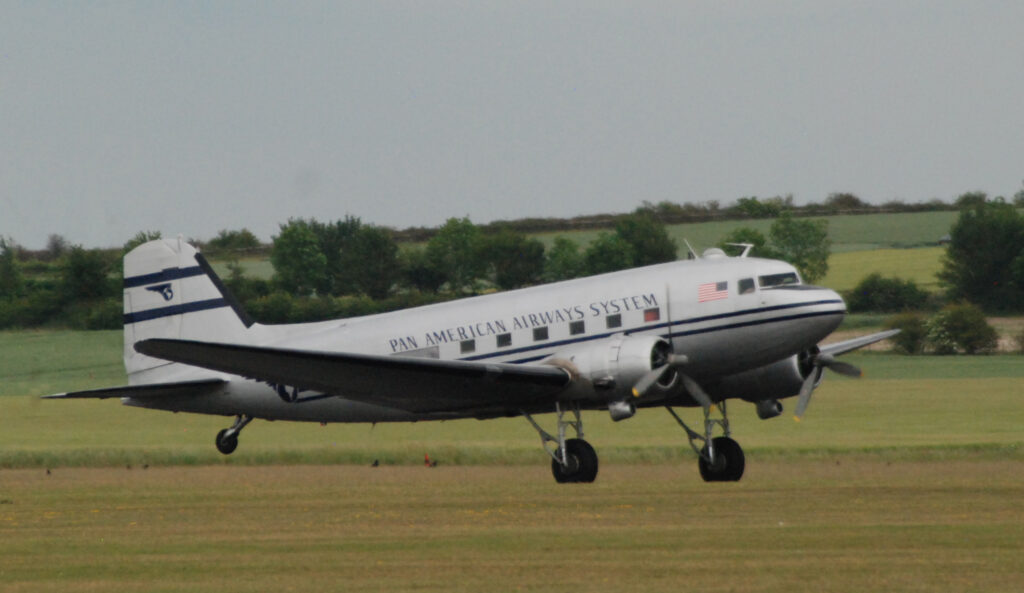
N877MG Pan American’s journey to Europe 2019:
N877MG departed her home base of Everett, Washington, on 11th May en route for the D-Day Squadron US-congregation point of Waterbury Airport in Connecticut. First stop on her trans-continental journey was the Yellowstone Airport at Bozeman, Montana. A small hydraulic leak on the cowl flap actuator was fixed by the Bozeman Airport mechanic and, the following day, the crew flew N877MG the 875 miles to Joe Foss Field, Sioux Falls, South Dakota. The next leg was the 490 mile stage to Green Bay, Wisconsin, also flown on May 12th. Weather on the planned route looked poor for May 14th, so the flight plan took a bend to the south, taking the team to Columbus, Ohio. This was home to one of the pilots, Bill Mnich, who, along with Gene Vezzetti and John Sessions, would fly Pan Am to Normandy.
From Columbus, the final stage to Oxford/ Waterbury was completed on 15th May. Training in formation flying and weather/ safety briefings took place at Oxford. On 18th May, N877MG took part in the flypast of the Statue of Liberty and New York. The following day saw her depart on the transatlantic crossing.
Departing Waterbury, N877MG flew to Presque Isle and then on to Goose Bay, arriving at 20:20 on May 19th. Although the first wave of C-47s managed to push onwards towards Iceland on Monday 20th. ‘Pan-Am’ was allocated to the second wave of aircraft, scheduled to follow on the Tuesday. They were delayed at Goose Bay on 21st due to bad weather and heavy snow. June 22nd dawned fair and N877MG departed for Sondre Stromfjord (Kangerslussuaq) in Greenland which also benefited from a good forecast. June 23rd, and they were on the move east again, flying across the North Atlantic to arrive in Rekjavik, Iceland, around 17:00. The final, and longest, sector from Iceland to Prestwick in Scotland was successfully flown the following day, June 24th. The approach to Prestwick was made over Glasgow and N877MG touched down in time for the 2-day air show dedicated to the D-Day Squadron. The first evening, May 24th, was clear and sunny but, unfortunately, the second day dawned wet and cloudy which somewhat restricted plans for flights in the C-47.
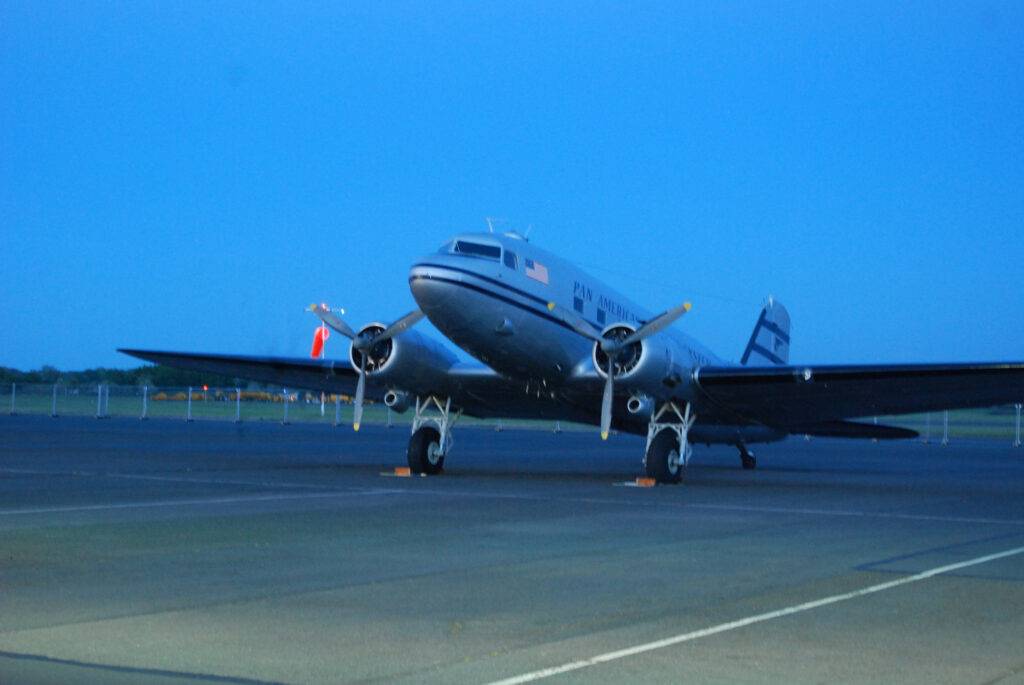
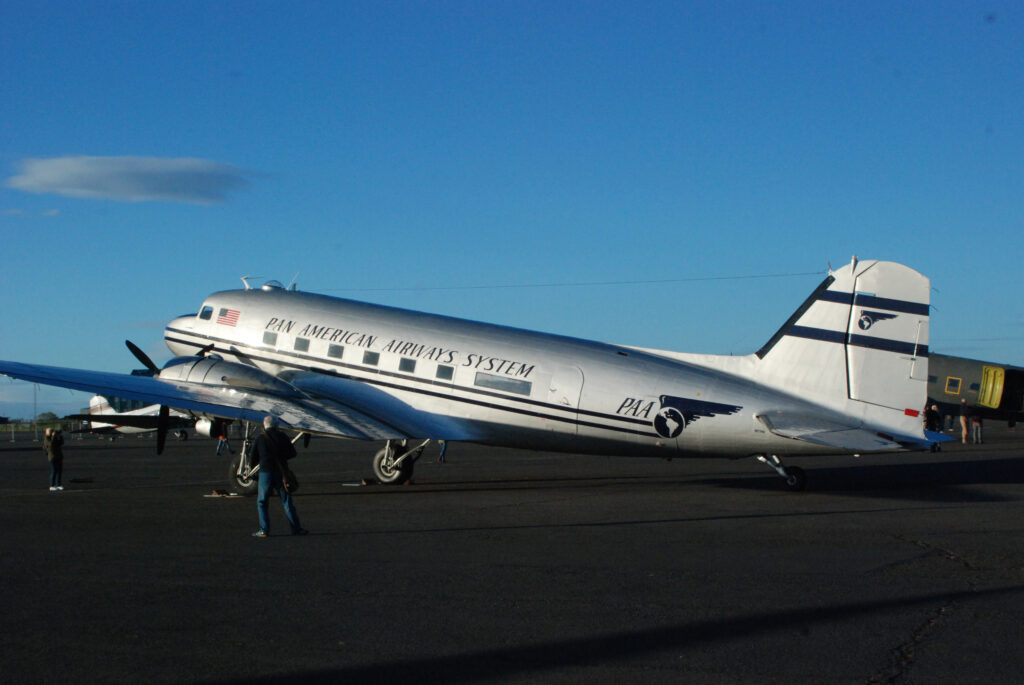
After a leisurely rest in Ayrshire, incorporating visits to Edinburgh and Glasgow, the crew departed Prestwick on 29th May for the flight south to Duxford, arriving at the Cambridgeshire airfield at 13:32. N877MG was part of the visit to Shuttleworth Trust’s Old Warden airfield on 1st June and took part in the Duxford Open Days on 2nd-5th June. departing for the Normandy beaches on June 5th, ‘Pan Am’ flew from Caen Carpiquet airfield on June 6th, passing over the battlefield beaches, Pegasus Bridge and Pointe du Hoc. The weather was poor on 7th June, improved on 8th and N877MG departed for Wiesbaden Erbenheim on 9th June. She took place in the candy drop during the successful open days at Wiesbaden and left there on 13th June for the flight over Hannover and on to Fassberg. On 16th June, the crew departed Fassberg around 13:15 on a Berlin Airlift commemoration flight, passing over Templehof, Tegel, Schonefeld before returning to Fassberg. During the Normandy commemorations, N877MG was visited by one of the last of the D-Day Pathfinder pilots, David Hamilton. When he flew on the aircraft he admitted he had enjoyed the experience ‘better than last time’ !
N877MG returned to Duxford where she remained until the Flying Legends display in mid-July. Her crew returned to the USA to visit their families and take up other commitments but returned for the display on July 14th. They offered several fortunate customers the opportunity to return to the USA on board N877MG via the Blue Spruce route. She returned to Prestwick on 15th July and overnighted at a local hotel. After divvying-up for fuel and Air Traffic Control fees in cash, they donned their survival suits and departed to fly to Reykjavik at a height of 10,000′. Weather on 17th July was poor for the stage between Reykjavik and Greenland, so they postponed departure for a day. July 18th dawned clear for the sector to Narsarsuaq, although it deteriorated for the next stage to Canada. An instrument approach to Goose Bay brought to a close a day’s journey of 1500 miles.
The following day, July 19th, N877MG touched-down at Bangor, Maine, back in the USA after her epic journey. The crew continued to Columbus, Ohio, the same day, re-tracing their outward flight. There was some discussion whether the team would join other D-Day squadron C-47s at the Oshkosh Fly-in scheduled for 27th and 28th july, but, by 21st July, wet weather was limiting grass parking at the Wisconsin airfield and it was decided to continue west. A limited supply of Avgas at Columbus meant that a shorter sector was flown to Cedar Rapids on 21st July, followed by transit to Rapid City. Departing Rapid City on 22nd July, John Sessions flew N877MG around Mount Rushmore before setting course for the Historic Flight Foundation’s new home base of Felts Field, Spokane.
In the few months after returning to the west coast, N877MG had a quiet spell with some maintenance involving the fitment of new propellers.
Legal and financial problems for John Sessions during 2023 saw difficulties at his North Dakota Eagle Crest Apartments compromising the activities of the Historic Flight Foundation. Court orders have seen N877MG advertised for sale in autumn 2023 and it remains to see if she passes to new owners.
Platinum Fighter Sales of Redondo Beach, California, were acting as agents for the sale of N877MG in January 2024 with a price tag of $595,000.
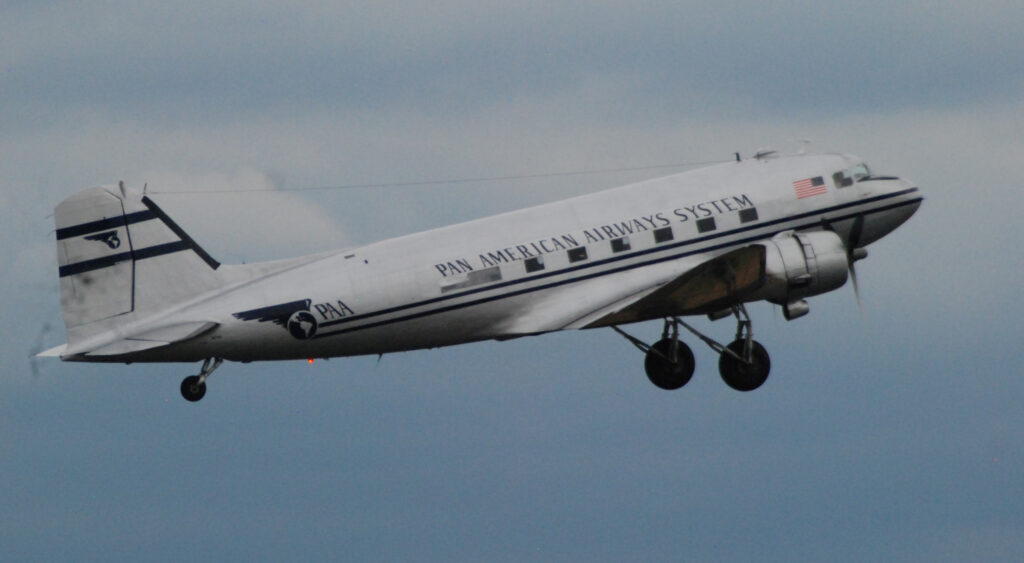
Hits: 1897
